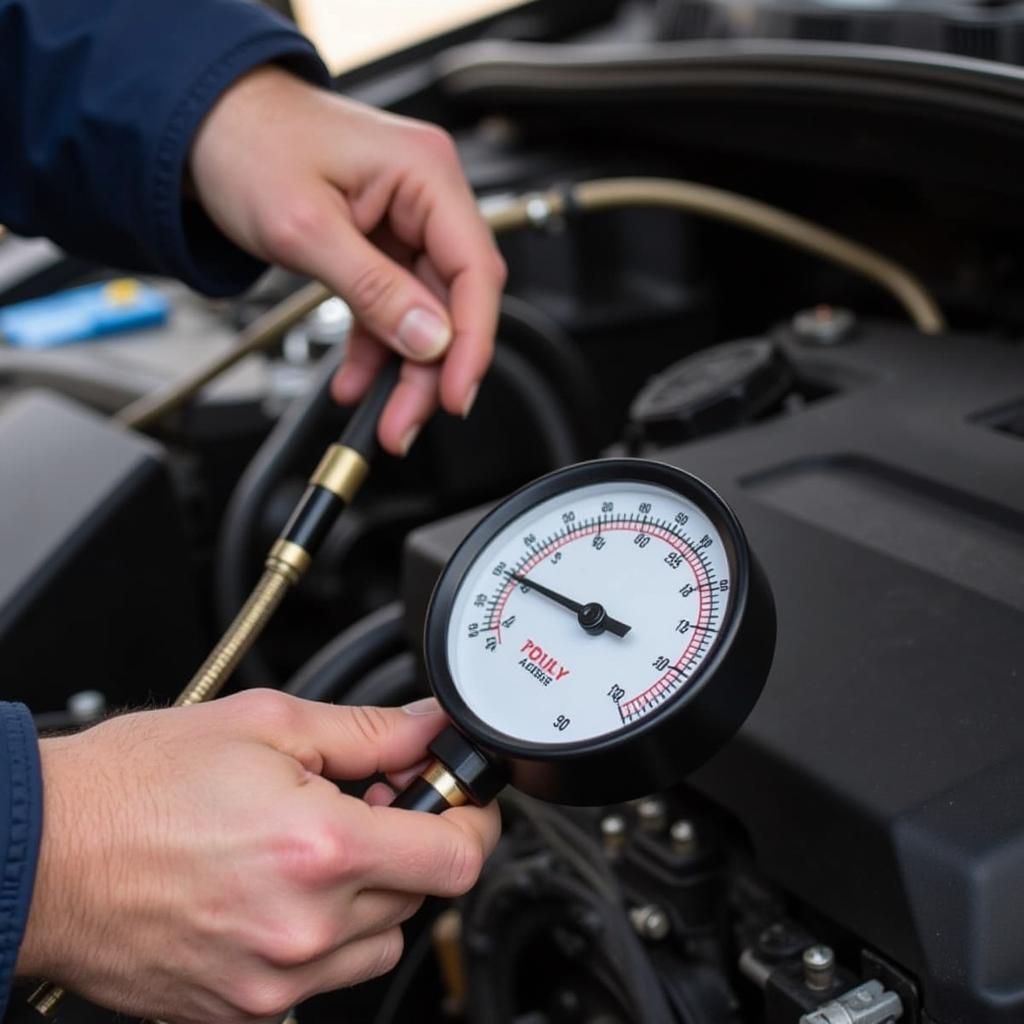Your cart is currently empty!

Understanding and Fixing VCDS P0420 and P1128 Error Codes
If you’re seeing the dreaded “check engine” light and your VCDS scan reveals P0420 and P1128, don’t panic. This article will guide you through understanding these codes, their potential causes, and how to troubleshoot them. We’ll cover everything from simple checks to more complex repairs, empowering you to address these issues head-on.
The P0420 code typically indicates a problem with the catalytic converter system efficiency, while P1128 often points to issues with the long-term fuel trim. While seemingly unrelated, these two codes can sometimes appear together, adding a layer of complexity to the diagnostic process. Understanding this interplay is key to effective troubleshooting.
Decoding the P0420: Catalyst System Efficiency Below Threshold
The P0420 code specifically means the oxygen sensors downstream of the catalytic converter are detecting similar readings to the upstream sensors. This suggests the converter isn’t effectively cleaning the exhaust gases.
Common Causes of P0420
- Faulty Oxygen Sensor(s): A malfunctioning oxygen sensor can provide incorrect readings, triggering the P0420 code even if the catalytic converter is working fine.
- Exhaust Leaks: Leaks in the exhaust system, especially before the catalytic converter, can introduce fresh air, disrupting the oxygen sensor readings.
- Rich Fuel Mixture: A rich air-fuel mixture can overload the catalytic converter, diminishing its effectiveness over time.
- Damaged Catalytic Converter: The most expensive culprit, a damaged catalytic converter will need replacement.
Unraveling the P1128: Long Term Fuel Trim Issues
The P1128 code signals a problem with the long-term fuel trim, meaning the engine control unit (ECU) is having to make significant adjustments to maintain the correct air-fuel ratio.
Why Does P1128 Occur?
- Vacuum Leaks: Leaks in the intake manifold or vacuum hoses can disrupt the air-fuel mixture.
- Faulty Mass Airflow Sensor (MAF): An incorrect MAF reading can lead to the ECU miscalculating the required fuel.
- Faulty Fuel Injectors: Leaking or clogged fuel injectors can cause an imbalance in the fuel delivery.
- Fuel Pressure Regulator Problems: Incorrect fuel pressure can lead to either a rich or lean fuel mixture.
 Checking Vacuum Lines for Leaks
Checking Vacuum Lines for Leaks
VCDS P0420 and P1128: Troubleshooting Together
When P0420 and P1128 occur together, it can complicate the diagnosis. However, a systematic approach can pinpoint the problem.
Step-by-Step Diagnostic Process
- Inspect for Exhaust Leaks: Carefully examine the entire exhaust system for any signs of leaks.
- Check Oxygen Sensor Readings using VCDS: Monitor the oxygen sensor data using your VCDS tool to see if they are functioning correctly and responding to changes in the exhaust gas composition.
- Test the MAF Sensor: Use VCDS to monitor the MAF sensor readings and compare them to expected values.
- Inspect Fuel Injectors: Check for leaking or clogged injectors.
- Examine Fuel Pressure Regulator: Verify the fuel pressure is within the specified range.
“Often, a seemingly complex issue like simultaneous P0420 and P1128 codes can be traced back to a simple vacuum leak,” says Robert Johnson, Senior Automotive Diagnostic Technician at Johnson Automotive.
Conclusion: Tackling VCDS P0420 and P1128 with Confidence
Addressing vcds p0420 and p1128 error codes requires a systematic approach and a thorough understanding of their potential causes. By following the steps outlined in this article, you can confidently diagnose and fix these issues. Remember, using a diagnostic tool like VCDS is crucial for accurate and efficient troubleshooting. Need further assistance? Connect with our expert team at vcds.tool or call us at +1 (641) 206-8880 and our email address: vcdstool@gmail.com. Our office is located at 6719 W 70th Ave, Arvada, CO 80003, USA.
FAQ
-
Can a bad oxygen sensor cause both P0420 and P1128? While less likely, a faulty oxygen sensor can indirectly contribute to both codes by disrupting the fuel trim.
-
Is it safe to drive with P0420 and P1128? While the car might still run, these codes indicate underlying issues that can worsen fuel economy and potentially damage the engine.
-
How much does it cost to fix P0420 and P1128? The cost varies depending on the root cause, ranging from a simple sensor replacement to a more costly catalytic converter replacement.
-
Can I fix P0420 and P1128 myself? If you have some mechanical experience and the right tools, you can address some of the simpler fixes. However, more complex issues might require professional help.
-
What tools do I need to diagnose P0420 and P1128? A VCDS scan tool is essential for accurately reading and interpreting these codes. Other helpful tools include a vacuum gauge, multimeter, and basic hand tools.
-
How can I prevent P0420 and P1128 from happening again? Regular maintenance, including timely tune-ups and using good quality fuel, can help prevent these codes from recurring.
-
What if I’ve replaced the catalytic converter and the P0420 code persists? Double-check for exhaust leaks or faulty oxygen sensors, as these can trigger the code even with a new converter. “Remember, addressing the root cause is key, not just clearing the codes,” advises Maria Sanchez, Lead Technician at Sanchez Auto Repair.
by
Tags:
Leave a Reply